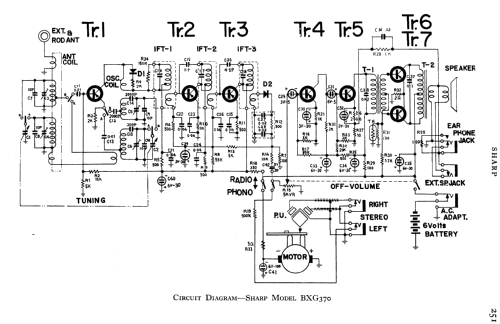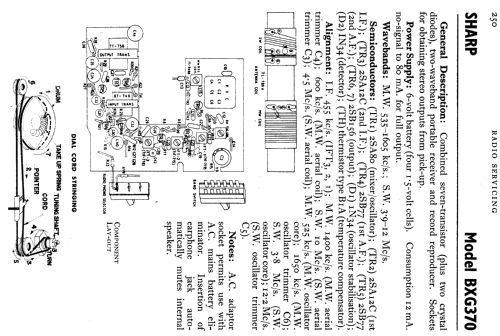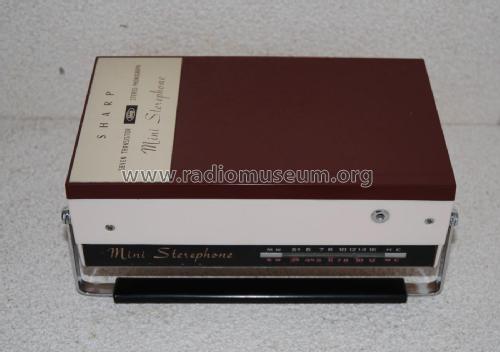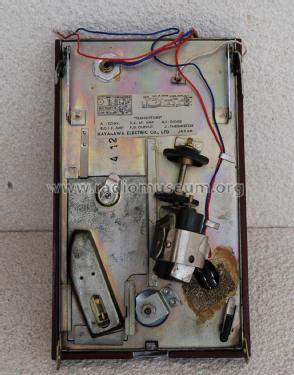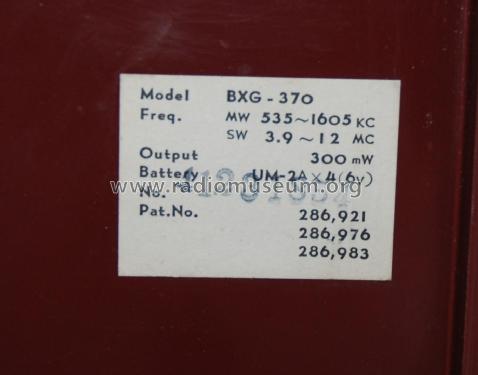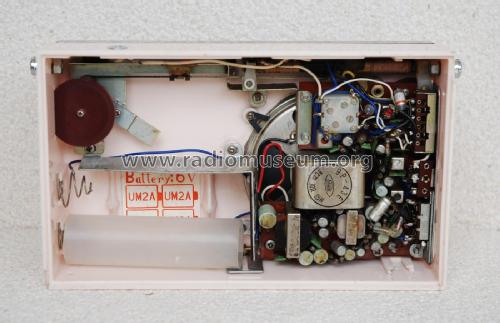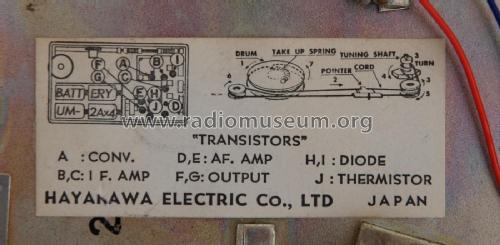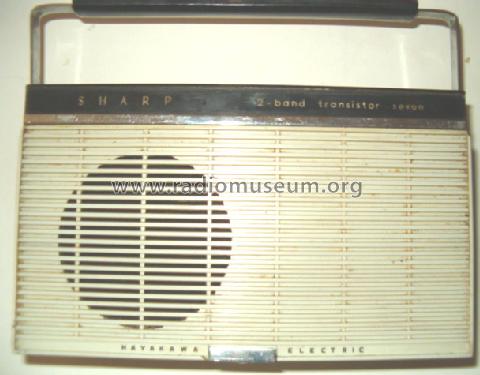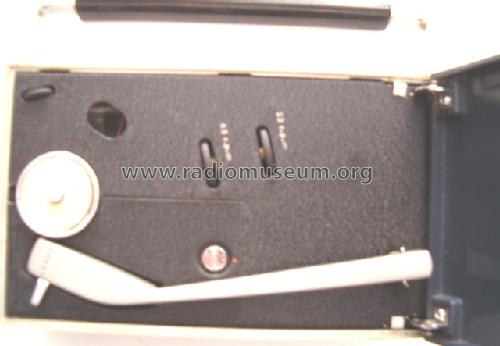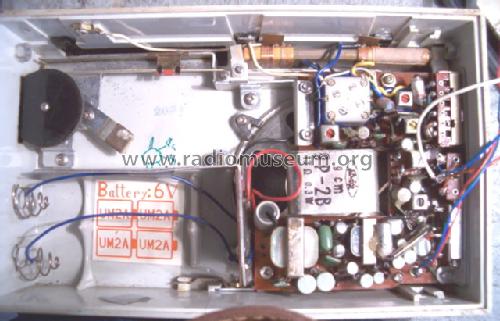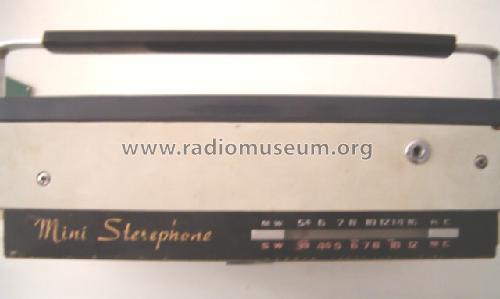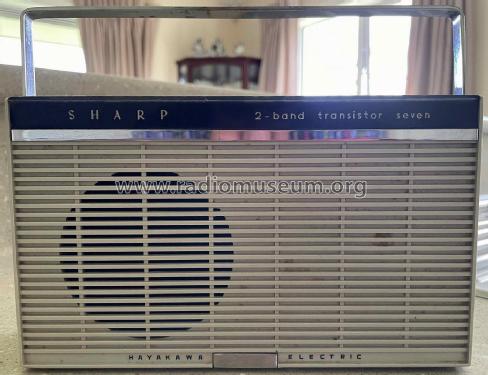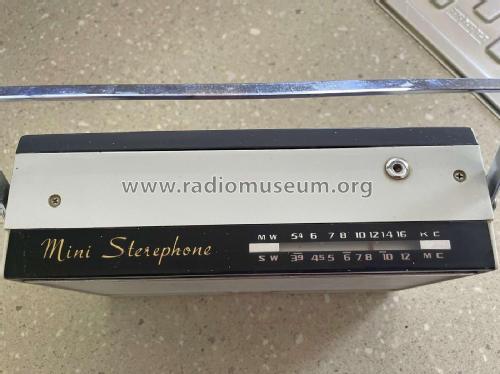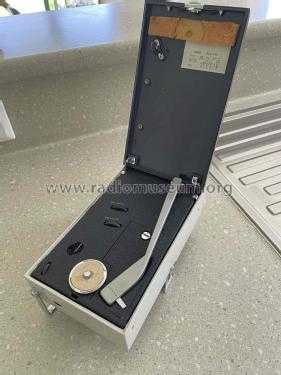Mini Sterephone BXG-370
Sharp; Osaka
- Country
- Japan
- Manufacturer / Brand
- Sharp; Osaka
- Year
- 1961
- Category
- Broadcast Receiver - or past WW2 Tuner
- Radiomuseum.org ID
- 133966
-
- alternative name: Hayakawa Electric Co.Ltd.
Click on the schematic thumbnail to request the schematic as a free document.
- Number of Transistors
- 7
- Semiconductors
- Main principle
- Superheterodyne (common); ZF/IF 455 kHz
- Wave bands
- Broadcast and Short Wave (SW).
- Details
- Record Player (not changer)
- Power type and voltage
- Dry Batteries / C: 4 x 1.5 Volt
- Loudspeaker
- Permanent Magnet Dynamic (PDyn) Loudspeaker (moving coil) / Ø 3.5 inch = 8.9 cm
- Power out
- 0.3 W (unknown quality)
- Material
- Plastics (no bakelite or catalin)
- from Radiomuseum.org
- Model: Mini Sterephone BXG-370 - Sharp; Osaka
- Shape
- Portable set > 8 inch (also usable without mains)
- Dimensions (WHD)
- 210 x 125 x 65 mm / 8.3 x 4.9 x 2.6 inch
- Notes
-
Sharp Model BXG370
A portable two-band superhet radiogram employing two diodes and one Thermistor. Power output 350 mW. Incorporates a round type PDS 3.5" speaker. Operates from 4 x 935 (C Cells) Eveready Type batteries. (MINGAY'S PRICE SERVICE)
Record player handles 10" or 12" 33⅓ rpm and 7" 45 rpm records.
Motor is 6V DC, and pick-up is stereo crystal. Stereophonic listening is by two earphones.Frequency range: MW 535~1605 KC (kHz); SW 3.9~12 MC (MHz).
Transistor types not mentioned in the schematic.
- Net weight (2.2 lb = 1 kg)
- 1.5 kg / 3 lb 4.9 oz (3.304 lb)
- Price in first year of sale
- 57.75 A
- Mentioned in
- Mingay's Price Service (Aug 1961.)
- Literature/Schematics (1)
- J.R. Publications Transistor Radio Service Handbook (E Series Handbook, Page S133.)
- Author
- Model page created by Julián Muñoz Lorenzo. See "Data change" for further contributors.
- Other Models
-
Here you find 1338 models, 1209 with images and 517 with schematics for wireless sets etc. In French: TSF for Télégraphie sans fil.
All listed radios etc. from Sharp; Osaka
Collections
The model Mini Sterephone is part of the collections of the following members.
Forum contributions about this model: Sharp; Osaka: Mini Sterephone BXG-370
Threads: 1 | Posts: 1
The material entry for this unit is incorrect.
It is listed as: Modern plastics (no Bakelite or Catalin).
This is an error, the 'plastic' case/s are made from Urea Formaldehyde (a later & improved version of Catalin) and commonly used in British domestic mains electric switches & sockets.
I have discovered this information myself, having just acquired this model to my collection and close examination & testing of the moulding material used to make this model.
Could you correct the material entry for this model?
Thank you,
Anthony Alston
Anthony Alston, 30.Jun.10
